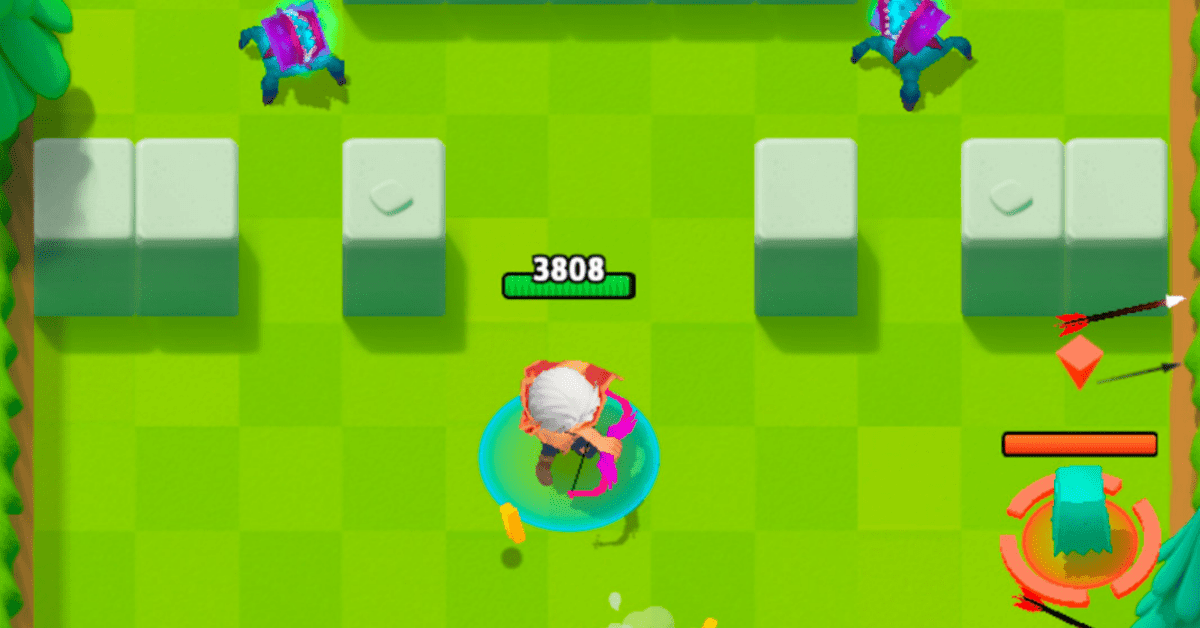Need data on hyper-casual games and its players to improve your user acquisition and monetization strategy?
We got you!
In this hyper-casual games report, we cover everything you ever wanted to know about this popular genre.
Let’s dive right in!
Introduction and Methodology
We’ll go over the research that’s based on data from Facebook Gaming’s report titled Genre and Great Games (with contributions from Facebook IQ and GameRefinery).
In this report, more than 13,000 mobile gamers across 11 countries were surveyed, while the focus was kept on 3 markets – the United States, the United Kingdom, and South Korea.
You’ll gain insight into the state of hyper-casual games and its players.
Furthermore, you’ll understand what motivates players to get into hyper-casual games and how well mobile games in this genre fulfill those needs.
We’ll also explore the role of community in casual games, types of ads casual gamers respond to, and what monetization models work best.
Most importantly, these insights will help you make better games and acquire more users.
The Power of Genre
Before we get into the specifics of hyper-casual mobile games, it’s important to understand the importance of mobile game genres for players.
The mobile game genre is the top factor that influences players to try a new game (49%). For 40% of gamers, recommendations from family and friends are important. App Store reviews are a factor for 35% of players.
Another interesting thing is that each country has a different genre preference. For example, in the US, top genres are card/casino, matching puzzle, word/brain/board, and hyper-casual.

The State of Hyper-Casual Games
In the last couple of years, the popularity of hyper-casual games has been on the rise. It’s the most popular mobile game genre in many western markets. However, in the east, hyper-casual games are not as popular.
26% of mobile gamers in the UK and 24% of mobile gamers in the US play hyper-casual games. In South Korea, 21% of mobile gamers play hyper-casual games.
Furthermore, hyper-casual games account for 49% of downloads in the US, 41% in the UK, and 9% in South Korea.
The revenue share of hyper-casual games is low across all markets – 0.4% in the US, 0.6% in the UK, and just 0.1% in South Korea.

Who Is Playing Hyper-Casual Games?
The key to advertising and monetizing a hyper-casual game is knowing exactly who plays them.
Let’s go over the basic demographics of hyper-casual players.
In the US, female to male ratio of hyper-casual players is 55% to 45%. In the UK and South Korea, 60% of hyper-casual players are women and 40% are men.
From that, we can conclude that the majority of hyper-casual gamers are women.
When it comes to age, in the US and UK, the majority of players are between the ages of 18 and 34. In South Korea, the majority of hyper-casual gamers are between the ages of 25 and 44.
On average, hyper-casual gamers play 3 games and their typical sessions last for more than 20 minutes.
What’s interesting is that hyper-casual gamers use mobile games to express something unique about themselves. Furthermore, they’re attracted to stylized games, rather than realistic ones.
More on player motivations in the following section.

What Motivates Hyper-Casual Gamers to Play Mobile Games?
The majority of reasons why hyper-casual players enjoy mobile games are based on emotions and social activities.
However, there’s an obvious disconnect between player motivations and what hyper-casual games provide.
Let’s look at it more closely.
US Players
Here are the main reasons why players in the US play mobile games:
- To relieve stress (67%)
- Pass the time (53%)
- To feel accomplished for completing something challenging (52%)
- Express something unique about themselves (44%)
- To connect with people they already know (39%)
- To be dazzled by something unique (32%)
However, there are huge gaps between player motivations and what hyper-casual games provide them.
While 67% of players play games to relieve stress, only 46% think hyper-casual games deliver on this.
Similarly, 44% want to express something unique about themselves, but only 24% of players feel hyper-casual games allow them that.
UK Players
For UK players, the most important reasons for playing mobile games are:
- To relieve stress (58%)
- Pass the time (56%)
- Feel accomplished for completing something challenging (53%)
- To immerse themselves in another character or world (44%)
- Express something unique about themselves (41%)
- To be dazzled by something unique (36%)
There is also a disconnect between player motivations and what hyper-casual games deliver.
For example, while 44% of players want to immerse themselves in another world, they think only 18% of hyper-casual games provide that.
South Korean Players
These are important reasons why South Korean hyper-casual gamers play mobile games:
- To relieve stress (61%)
- Pass the time (34%)
- Feel accomplished for completing something challenging (32%)
- To be dazzled by something unique (28%)
- To immerse themselves in another character or world (25%)
- Connect with a subject they’re passionate about outside gaming (24%)
Relieving stress is by far the biggest motivation for South Korean gamers (61%). But once again, we see a gap between what players want and what hyper-casual games deliver. Only 30% of South Korean players think hyper-casual games relieve stress.

What Leads to High Churn Rates?
If players’ needs aren’t met, they’re likely to stray and abandon games. Many hyper-casual gamers turn to puzzle games instead. Some of them even move on to mid-core genres like action games.
When it comes to hyper-casual games, there are specific reasons why players stop playing.
Here are the most important ones.
In both the US and the UK, the three most important reasons for abandoning a hyper-casual game are getting bored with the game, seeing ads too frequently, and the game becoming too repetitive.
South Korean players stopped playing because the game was too repetitive (42%), got boring (37%), and because the ads were too frequent (27%).
Here’s what that means for developers.
While the appeal of hyper-casual games is in simple game mechanics, developers need to work on making the game more interesting long-term and avoiding repetitiveness.
Furthermore, developers should be careful when it comes to ad frequency. Since ads are the number one monetization method for hyper-casual games, it seems logical to increase the number and the frequency of ads. However, as we have seen, that can have the opposite effect and lead to high churn rates.
Features Hyper Casual-Games Need to Have to Keep Users Engaged
Since many players abandon hyper-casual games due to boredom and repetitiveness, developers need to work on features that will enhance the core game experience.
Here are three interesting features developers can integrate to boost engagement and user retention.
Decorative Skins/Accessories
Decorative skins and game accessories are a great way to make a hyper-casual game more appealing, interesting, and engaging.
They don’t obstruct the main gameplay and can be easily implemented. Players like them because decorative elements provide a sense of accomplishment and self-expression.
A great example of these decorative skins can be found in Perfect Cream, a hyper-casual game.
Collectible Albums
Another feature hyper-casual developers should explore is collectibles album. It can include decorative items, characters, skins, etc., and its role is to give players a sense of progress and accomplishment.
A good example is the collectibles album in Sky Ball.
Special Playing Modes
As we have learned, boredom and repetitiveness are the top reasons why players abandon hyper-casual games.
To avoid that, developers should implement special playing modes that include different rules, mechanics, and goals.
The Role of Community in Hyper-Casual Games
More than 50% of hyper-casual gamers in the US and the UK took part in a social activity related to gaming. Furthermore, 67% of casual gamers in the UK and 74% US say they’re open to doing more social activities in the future.
Here’s what they’re interested in when it comes to communal activities.
In the US, 41% of gamers are open to engaging with posts from other gamers as well as from game studios. 35% are into checking out other players to see their achievements and scores.
In the UK, 30% of hyper-casual gamers are interested in chatting with other people in real life about the genre. 30% would engage with posts from other players and 28% are into chatting about the genre online.
Engaging with posts from other players appeals to 41% of South Korean casual gamers. 33% like participating in online gaming forums and communities. 32% like checking other players’ achievements.

Information Hyper-Casual Gamers Want to Receive from Developers
Developers have a big role in creating a strong community around hyper-casual games. 80% of players in the US and UK report they’re into receiving messages from developers.
Here’s the type of information they want to hear about:
- Tips, tricks, and strategies
- Upcoming updates and content releases
- Questions and answers
- Upcoming in-game events
- Behind-the-scenes content
- Customer service/product support
Social Features Hyper-Casual Games Needs to Have
There are also some feature recommendations to enhance the communal aspect of hyper-casual games as well as engagement.
Send/Ask for Help from Friends
This is a common casual game feature that can easily be integrated. It refers to giving players the ability to send or ask for help from friends. For example, asking for boosts or lives.
It can also relate to in-game currency.
Competitive Leader System
As we have seen, hyper-casual gamers are interested in seeing the achievements of other players. That’s why it’s a good idea to implement a competitive leader system.
Co-Op Playing
Playing with friends, family, or other players is not something we find often in hyper-casual games.
That’s a missed opportunity. There’s really no reason for this feature not to be implemented. Granted, it shouldn’t be the main game feature, but having a light co-op layer could significantly improve user retention and engagement.
How to Monetize a Hyper-Casual Game?
In this section, we’re going to talk about one of the most important aspects of mobile game development – monetization.
For hyper-casual games, the two main models are in-app ads and in-app purchases. Here’s how each of them works.

How to Incorporate Ads Into Hyper Casual Games?
The monetization strategy that works best for hyper-casual games is in-app ads. Most hyper-casual games rely on this model.
The players are used to seeing ads in games.
85% of South Korean players, 82% of UK players, and 79% of US players are open to seeing in-app ads.
That’s great news for developers.
However, user preferences should play a big role when coming up with an ad monetization strategy.
Overall, hyper-casual gamers favor longer, less frequent ads as opposed to shorter, but more frequent ads. This information is crucial for developers.
Oftentimes, in hyper-causal games, we see ads that seem to pop up every couple of seconds. That’s usually deemed too aggressive by players. Nobody wants to be interrupted that often during gameplay.
Instead, developers should focus on slightly longer ads and reduce the number of ads that are shown.
Hyper-casual gamers report that they prefer one 30-second ad per 10 minutes of gameplay over seeing several shorter ads in the same period of time.
Furthermore, players should get a reward for watching an ad. This creates a nice incentive for users and it’s a win-win situation for everybody. To illustrate this point, 69% of players in South Korea say they prefer rewarded video ads over classic video ads.
In-App Purchases in Hyper-Casual Games
In all three markets, hyper-casual gamers are the ones who are least likely to make an in-app purchase. More specifically, 3.7% of players in the US, 3% in the UK, and 1.9% in South Korea would make an in-app purchase in a month.
However, there are still some monetization opportunities with this model.
In the following section, we’ll talk about some suggestions in terms of monetization features that might increase in-app purchases.

Monetization Features Recommendations
There’s no question that in-app ads bring the majority of revenue for hyper-casual games. However, top hyper-casual games are implementing certain features that are geared towards boosting in-app purchases.
It might be a good idea to consider these features.
Loot Boxes
Loot boxes can be a great way to introduce in-app purchases in hyper-casual games. They can contain different items, boosts, characters, decorations, and other collectibles.
What offering loot boxes as an in-app purchase does is create excitement for players and a desire to collect these items.
A great example of it is loot boxes in Go Knots 3D.
Limited-Time In-App Purchase Bundles
The basic idea of this in-app purchase is to create a bundle containing currency, items, and other valuables and offer it at a discount.
Most successful mobile games utilize this simple trick. It works because players get a better deal for the items when they’re in a bundle as opposed to purchasing single items. A good example of limited-time offers can be found in Happy Glass.
Consumable Boost Items
Consumable boost items are tied to core gameplay and are very versatile. Depending on the type of hyper-casual games, the boosts can include damage boosts, shields, and even hints and tips.
All of them help players make progress in the game and complete difficult levels. That’s what makes them desirable as an in-app purchase.
However, developers should be careful with the implementation and price points for this feature. It can easily lead to a pay-to-win model which is something most players are not into.
Ad Preferences: What Type of Advertisements Hyper-Casual Players Respond to Best?
In the mobile gaming industry, the role of advertisements is to acquire new players and to bring lapsed players back.
Since user acquisition can get quite pricey, it’s quite important to know players’ ad preferences. It will help you create ads that convert more users.
More than 60% of players in the US, UK, and South Korea say an advertisement can convince them to download a new game, but only if it’s appealing enough.
Here’s what kind of messaging and tone you need to include in ads for hyper-casual games.
Ad Preferences in the US
US hyper-casual gamers prefer ads that showcase the main gameplay (42%). 39% of users like ads they can interact with and try out game controls. For 34% of users, ads that showcase the progression of the character/universe are the most appealing.
When it comes to tone preferences for mobile game ads, 52% of players like humorous ads. 36% prefer a relaxing and tranquil tone, and 34% like exciting, adrenaline-pumping advertisements.
Here’s an example of an ad that would appeal to US hyper-casual gamers. It’s an ad for Thief puzzle and it showcases the main gameplay and it’s humorous. The person holding the smartphone demonstrates how to play the game while showcasing several levels. As it’s revealed in the ad, the goal of this hyper-casual game is to steal but not get caught.
Ad Preferences in the UK
In the UK, 50% of hyper-casual players want to see gameplay footage in ads. 39% of players prefer ads that showcase the characters and/or the story. 35% of gamers like it when they’re able to interact with the ad.
Just like players in the US, a lot of UK gamers gravitate towards a humorous ad (43% of them). A challenging tone is also preferable (42%). 38% of players like adrenaline-pumping ads.
Here’s an example of an ad that would appeal to UK hyper-casual gamers. It’s an ad for Master Doctor 3D and showcases both gameplay footage and game characters. Additionally, it has a humorous tone. In this game, the players play as the doctor, who’s also the main character, and the goal is to heal various patients.
Ad Preferences in South Korea
For South Korean players, ad preferences are pretty much the same as those of UK players.
They like ads that showcase the main gameplay (49%), characters, or story (45%), as well as interactive ads (44%).
When it comes to emotional tone preferences, 48% like exciting ads, 37% like humorous ads, and 36% like challenging ads.
Here’s an example of an ad that would appeal to hyper-casual gamers in South Korea. It’s a playable ad for Bridge Race that showcases gameplay, it’s interactive and exciting, which checks all the boxes.
The data source for all video creatives is AppMagic, a leading ad intelligence platform. Get 3 days of free access to all AppMagic’s features, as well as 10% off, by clicking this link.

How to Bring Players Back?
What often happens with hyper-casual games is that players stop playing them for different reasons. Oftentimes it’s because they get bored, the game becomes too repetitive, they have found a new game, or they simply don’t have time to play.
The good news is the majority of hyper-casual gamers are open to coming back to a game. In fact, about 80% of players in the US and the UK say they would consider returning to a game they haven’t played in the last month.
Here’s what can influence hyper-casual gamers to re-download a game.
For 38% of US players, someone bringing up the game during a real-life conversation is the number one reason for returning. 32% of users would re-download after hearing about new content or updates. For 23% of players, seeing the game mentioned on social media is a good reason to come back to it.
Hearing about new content would influence 34% of UK players to return to a game. For 26%, hearing about a reward for coming back is a good enough reason. 22% would re-download if they hear about the game from friends or family on social media.
South Korean players have the same reasons for coming back as UK players.
The Future of Hyper-Casual Games
As I mentioned before, hyper-casual games often suffer from poor user retention. That makes sense if you think about it. Hyper-casual games are made to be as simple as possible. While that often results in a highly addictive game, it can also go the other way and make people bored after some time of playing.
Furthermore, traditionally, developers would primarily use in-app ads as a monetization method and essentially get as many ad views as they can from players before they bounce. However, constantly finding and acquiring new players has become more and more difficult.
For those reasons, hyper-casual developers are turning to a hybrid monetization model that combines in-app ads and in-app purchases. Because that approach requires decent retention rates, developers have also started to add additional features to hyper-casual games.
That resulted in a new type of hyper-casual game called hybrid-casual games. These games mix and match different genres, usually keeping a casual core and adding various meta-layers. We often see a simple core loop with mid-core elements like competitive social features, collection systems, or a complex game economy.
Naturally, that results in hybrid-casual games having higher retention rates because players have more reasons to stick around for 7 days, 30 days, or more.
That’s It, Folks
We have come to the end of our hyper-casual games report.
We advise you to consider the data from this market research when making important business decisions – it will help you eliminate guesswork.
Did you find this report helpful? Let me know in the comments.
And don’t forget to subscribe to our newsletter to receive the latest mobile gaming reports.







Comments